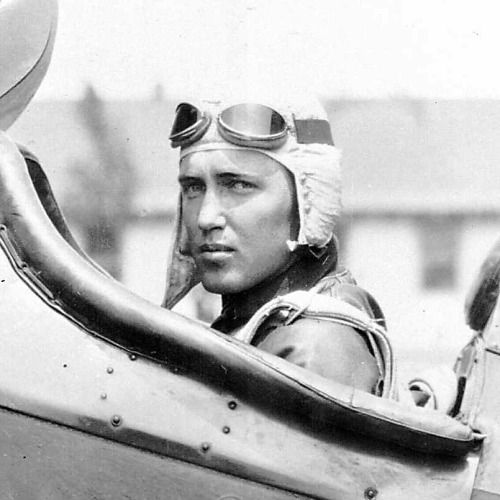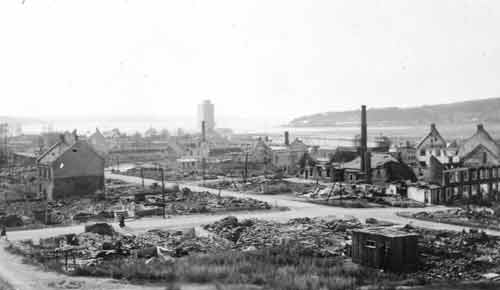Sunday 21 April 1940
 |
| Capt. Losey, the first American military fatality of World War II. |
Norway Army Operations: The Germans of the 196th Infantry Division continue moving north from Oslo. The British 148th Infantry Brigade attempts to block them at Lake Mjøsa, south of Lillehammer. The Luftwaffe attacks the Allied positions with 8 Heinkel He 111 bombers, aided by heavy artillery. The British arrive too late to help, and both the British and Norwegians are sent reeling back to Lillehammer at midnight over snowy mountain roads.
At Bagn, on the other main road north, the Germans eliminate the Norwegians attempting to block the road and continue toward Trondheim.
The German tanks are proving highly effective in Norway. The Norwegians and the British have no effective anti-tank weaponry. Lt. Robert Wynter says: "Our anti-tank rifle is completely ineffective - simply bounces off!" This is a common problem early in the war.
Near Steinkjer, there is fierce fighting around Krogs Farm at Sandvollan. Reportedly, during the battle which lasts a couple of days in Inderøy and Steinkjer, twelve British soldiers perish. These may have been - likely were - the first British soldiers to die in action against the Germans, not the ones at the separate battle further south.
Norway Naval Operations: A German destroyer leads a troop transport up through the ice of Trondheim fjord. The transport lands mountain troops at Verdal and Kirknessvag, in front of General de Wiart’s 146th Brigade, poised to attack Trondheim. The Germans, once landed, quickly advance from Verdal to the north on the strategic British/Norwegian positions at Steinkjer. They are aided by a Luftwaffe attack that levels the town and leaves 1,800 civilians homeless in the winter. The northern British pincer of Operation Sickle is now blocked.
This also would take the pressure off of the Germans besieging Hegra Fortress, which would no longer serve any strategic purpose for the Allies as a link-up point. The Germans now are content to simply bombard Hegra fortress and wait for the inevitable Norwegian surrender there.
European Air Operations: At night, the RAF bombs Aalborg airfield in the north of Denmark and Stavanger-Sola in southern Norway. One bomber is lost, and the bombers destroy six aircraft on the field at Stavanger.
The Luftwaffe bombs Namsos and Andalsnes.
Battle of the Atlantic: U-26 (Heinz Scheringer) torpedoes and sinks 5,159-ton British freighter Cedarbank northwest of Ålesund, Norway. The Cedarbanks was carrying key supplies for the 148th Brigade. There are 30 survivors and 15 perish.
The Luftwaffe drops mines off the British coast. The RAF sends 36 aircraft to drop their own mines.
Convoy HG 27 departs from Gibraltar.
BEF: The 23rd Infantry Division moves to France.
British Homefront: A UK court holds that fathers expecting children may delay their military service to mitigate "potential nervous strain" on the expectant mothers.
Future History: Robert Losey has a memorial at Dombås, erected by the citizens there in 1987. There also was an airfield named in his honor at Ponce, Puerto Rico. A street in Scott AFB in Illinois is named for Losey. In addition, the Losey Atmospheric Sciences Award is presented every year the by American Institute of Aeronautics and Astronautics.
 |
| Steinkjer after Luftwaffe attacks. |
April 1940
April 1, 1940: Weserubung is a GoApril 2, 1940: British Subs On Alert
April 3, 1940: Churchill Consolidates Power
April 4, 1940: Missed the Bus
April 5, 1940: Mig-1 First Flight
April 6, 1940: Troops Sailing to Norway
April 7, 1940: Fleets At Sea
April 8, 1940: HMS Glowworm and Admiral Hipper
April 9, 1940: Invasion of Norway
April 10, 1940: First Battle of Narvik
April 11, 1940: Britain Takes the Faroes
April 12, 1940: Germans Consolidate in Norway
April 13, 1940: 2d Battle of Narvik
April 14, 1940: Battle of Dombås
April 15, 1940: British in Norway
April 16, 1940: Germans Cut Norway in Half
April 17, 1940: Trondheim the Target
April 18, 1940: Norway Declares War
April 19, 1940: Dombås Battle Ends
April 20, 1940: Germans Advancing in Norway
April 21, 1940: First US Military Casualty
April 22, 1940: First British Military Contact with Germans
April 23, 1940: British Retreating in Norway
April 24, 1940: British Bombard Narvik
April 25, 1940: Norwegian Air Battles
April 26, 1940: Norwegian Gold
April 27, 1940: Allies to Evacuate Norway
April 28, 1940: Prepared Piano
April 29, 1940: British at Bodo
April 30, 1940: Clacton-on-Sea Heinkel
2019


